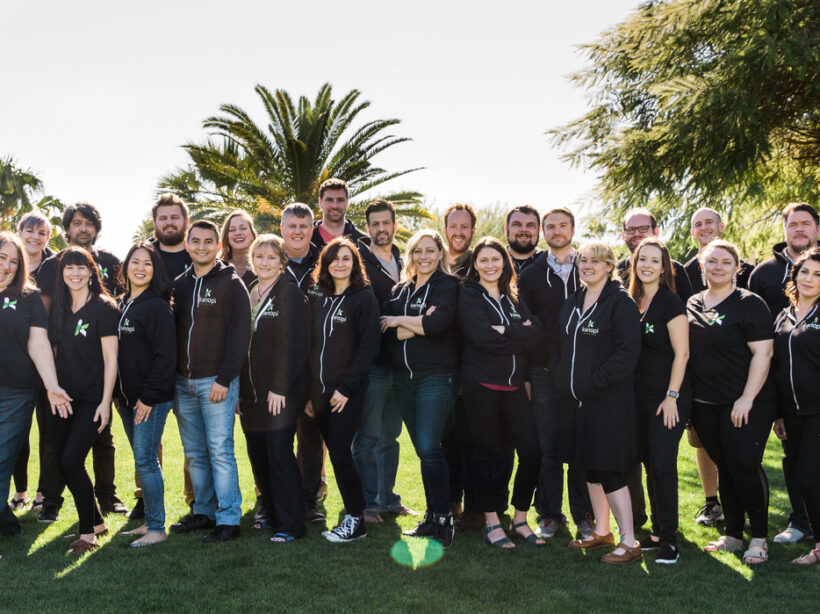When planning a nonprofit website refresh or upgrade, you might feel overwhelmed deciding where to get started or which website elements you should prioritize. You can take the website refresh process in many different directions, and as a result, you might be uncertain of which changes will actually make the biggest difference in driving traffic to your site.
This is where it can be immensely helpful to review studies and statistics on website traffic, design, and promotional strategies. Assessing these statistics can help you create a data-driven game plan for your website revamp project.
The top nonprofit websites take user research and user experience (UX) best practices into consideration to create a better visitor experience through an iterative process. With this in mind, we’ve compiled seven illuminating statistics to guide your website refresh and promotion strategy. Let’s dive in!
1. Visitors can assess your website’s visual appeal within 50 milliseconds.
Clearly, your visitors’ first impressions of your website mean everything. A negative first impression can cause would-be donors, volunteers, and advocates to click away and dismiss your organization. By contrast, a positive first impression can influence a casual visitor to learn more about your cause, get involved, and even donate.
So, how can you make the most positive first impression possible for new visitors? Nonprofit websites that stand out from the crowd have streamlined, well-designed home pages that offer visual harmony and multiple opportunities for visitors to engage further.
In your website refresh, optimize your home page by including a variety of calls to action (CTAs) that appeal to different audiences. For instance, you might include buttons or links to sign up for your email newsletter, register to volunteer, or donate. Also, your home page should be visually cohesive, fully branded to your organization, and make effective use of white space.
2. The past three years have seen a 42% increase in online giving.
Online giving is growing in importance every year as a major driver of nonprofit revenue. That’s why your website planning and development process should include a significant focus on improving your online donation process.
Ensure your online giving page is easy to find by including CTAs across your website that point back to it. The form itself should be as simple as possible so donors can fill it out easily. Only ask for necessary information, such as donors’ names and payment information. Also, offer suggested giving amounts so donors can determine how much they want to donate without having to fret over the decision.
3. Over 50% of nonprofit website traffic comes from mobile users.
You’ve probably heard time and time again that your website must be mobile-responsive, but it’s helpful to see just how crucial this is by reviewing the stats. Failing to make your website mobile-friendly can inadvertently create a negative experience for over half of your potential audience.
Make your website just as successful on mobile devices as it is on desktops by assessing each page in the mobile view to check for formatting issues. Toggle between the mobile, tablet, and desktop views using your content management system (CMS) tools to edit each version independently. You can also run your website through Google’s mobile-friendly test to quickly assess whether your site is mobile-friendly or not.
4. 43% of all websites are powered by WordPress.
This equates to hundreds of millions of websites built on WordPress, the world’s most popular CMS platform. What does this have to do with your website refresh journey? If you’re looking to upgrade your website from a free or less complex content management system to a more robust platform, WordPress could be the right choice for you.
WordPress is distinguished by its user-friendly, intuitive interface, flexible editing experience, and powerful support community. A variety of organizations turn to WordPress, along with other robust CMS platforms like Drupal, to build more long-lasting, complex websites. Review Kanopi’s guide comparing Drupal and WordPress for more information on each system and to help choose the best platform for your website upgrade.
5. Approximately 96.8% of website home pages have accessibility failures.
Following accessibility policies like the Web Content Accessibility Guidelines (WCAG) makes your website usable for everyone, including those with and without physical or mental disabilities. Accessible websites make the internet a more inclusive place, but unfortunately, the vast majority of sites come up short.
As you redesign your website, follow the WCAG standards to improve accessibility. These guidelines include adding alternative text for images and captions for videos, using a color contrast ratio of at least 4.5:1 for text, keeping navigation consistent across pages, and more strategies to make your site more inclusive.
6. A well-designed user interface could raise your website’s conversion rate by 200%, and a better user experience can increase conversion rates up to 400%.
User experience is the way your website visitors feel when interacting with and navigating your website. As you can see, when your organization’s website offers a positive user experience, you can boost your conversion rates considerably. This can translate into more donations for your cause, volunteers for your volunteer opportunities, subscribers to your email newsletter, and so on.
Ensure your nonprofit’s web design creates a positive user experience by:
- Offering intuitive navigation that’s uniform across website pages.
- Reducing page load times by compressing images and minimizing your code.
- Standardizing your branding to reassure visitors that they’re interacting with your organization, helping them feel more comfortable when donating online.
Assess your website’s analytics, such as time on page and bounce rate, to determine whether you’re engaging visitors effectively and what you can do to improve your user experience.
7. The Google Ad Grant Program has given over $9 billion in free advertising to more than 115,000 nonprofits in over 50 countries.
The Google Ad Grant Program offers eligible nonprofits $10,000 per month to spend on Google advertising. This represents a valuable opportunity to get your organization’s website in front of more prospective supporters. Using Google Ads, you can connect with individuals who are searching for terms related to your organization, allowing you to connect with an audience that’s already interested in your mission.
Getting Attention’s Google Ad Grant guide recommends optimizing your website to drive conversions before using ads to direct audience members to it. During your website refresh, take the opportunity to create a targeted landing page to use for your Google ads. This page should include an engaging headline, compelling visuals, impact stories, and CTA buttons that allow visitors to get more involved.
As you plan your nonprofit website refresh or upgrade, keep in mind that you aren’t just updating your website; you should be thinking about new ways to engage and build your online community. When you design your website with trends and user research in mind, you can appeal to your audience more effectively and create a more positive website experience.
And if you need help, contact us.
Originally written for and posted on the AFP Global website.









